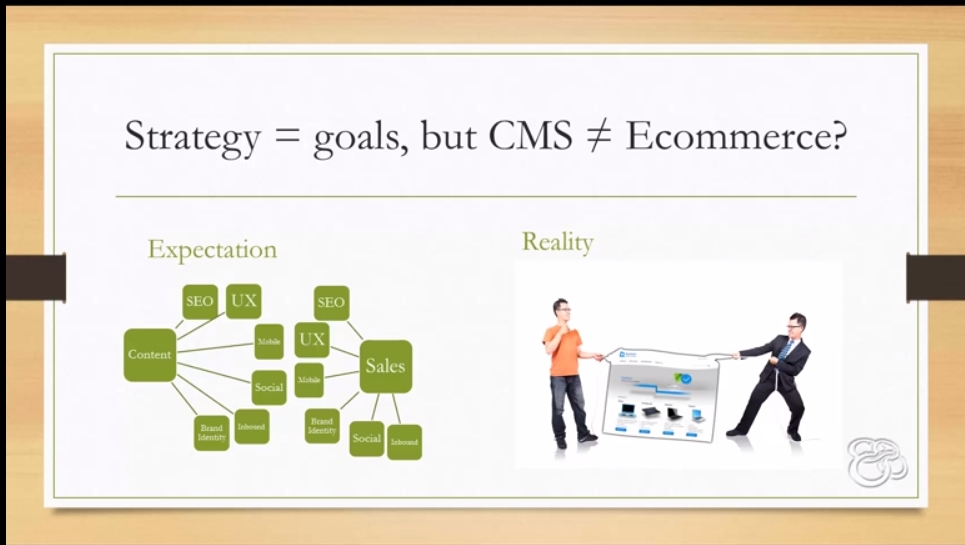From Static to Dynamic to Related Content and how Core Content Done...
The following was guest written by Svetla Yankova of Sitefinity.
This is the first website ever. It’s still live, and quite amazing.
Looking at it in a day when you are dealing with delivering a major campaign across channels, analyzing KPIs or personalizing dynamic content on a website for me is the marketer’s equivalent of stopping and smelling the roses.
Interlinked content effectively shifted our entire economy. Being in the content management business for so long, you become very keen on observing the crowned royalty – content - as a phenomenon, as it’s the one core thing that makes the whole thing tick.
Is core content management too boring of a topic for CMS Buyers?
Working in both marketing and sales gives quite an interesting perspective on what makes an organization successful and what is a good conversation around the role of CMS. When marketing a CMS you talk about the future, about how you can support the ambitious aspirations of real-time, omni-channel fully integrated experiences that are incredibly good at guessing customer expectations and exceeding them, the whole 9 yards. This is the innovation curve and the biggest potential growth. In sales you actually can be relevant when you start talking about the core, about getting presentation and content right. The boring stuff become not so boring anymore, because you come to realize that their need to get the core right is quite often the reason why organizations are shopping around and asking your help with in the first place – their current process is just not supporting their growth. You can actually do a demo only 4 year old core content features- ancient history for the industry - and still be relevant and definitely not boring.
When working on the Sitefinity 7 release, I couldn’t help but think how relevant it will look like 4-5 years from now, because it delivers such a critical piece at the core of content management that will ultimately be the glue sticking your innovation together.

How core content actually evolved
Remember when the landscape shifted from static into more dynamic content and separation of content and presentation started to become critical. It suddenly made sense to structure things together, because starting out from a blank canvas didn’t make sense anymore - it was a waste of time and money. A blog is a blog, I can have it presented in 700 different ways – it only needs to be managed once.
We moved from this concept into a bit of a meta concept– dynamic content with dynamic structure. Requirements around different content types grew so fast that no system could deliver them all and while developers could create them, it was becoming extremely expensive and unsustainable. So we figured out UIs for creating UI and data for creating data. Very meta.
The next natural step follows the design of the web – the web is a bunch of free form content that is interlinked. But we have come to the logical conclusion to go with structure more often than free form - structure scales better. Good thing that we did, because as it turns out to be crucial to the next generation of innovation - categorization and filtering over structure are the only sustainable way to actually achieve real-time personalization for example.
Here comes the next step – it only makes sense to be able to link structures to other structures and content to other content.
It was the same evolutionary process as with entirely custom content types – this wasn’t impossible, just becoming extremely expensive, unsustainable and unmanageable for business to keep developing it over and over again, because requirements for relationships come up consistently.
Relationships are very crucial to how the whole digital presence can scale
Relationships connect the entire context together. Humans are naturally predisposed to understand and like relationships, and they like to understand relationships. See that’s a thing that we often forget when we get excited about innovation. The promise of timely, relevant content for every customer across every channel implies that you need to have a heck of a lot of content that is contextualized among a heck of a lot of other content that needs to logically feel like a story. Yes, contextual marketing richens the idea of campaign. The original end goal of communicating a message and a static goal to action shifts as just the beginning of the journey. But then you contextualize the call to action based on its relationship with the environment and user. And then you chains then the next call to action, and then the next call to action. The same way that amazon or Netfilx can guess what you might want to do next with incredible accuracy.
True dynamic content and its relationships are not only key for personalization. They are critical for the future of the semantic web, to managing the customer journey, for being able to get a handle of the process of managing the new magnitude and sophistication and variety of content that the new age customer seeks.
The concept of related content essentially embodies the same principle as the first website by Sir Berner’s Lee. A bunch of stuff connected with other stuff. Simple and useful. And definitely very crucial in how this whole thing will scale.
So yes, in Sitefinity 7 we went back to the core big time, by allowing you to relate anything to anything through related data and making everything dynamic in structure through custom fields. This is a huge platform innovation in and by itself, and solution architects are having a field day with it, but more importantly – it’s a large step in paving the road towards the new age of data-driven and process-driven marketing centered on the customer. It’s content done right and content done right always matters.

Jade Carter
Jade is a content writer for CMS-Connected, facilitating the needs of the company blog. Bringing 10 years of Search and Digital Marketing to the table, he strives to build informative, relevant and fun editorial posts for the blog feed. Jade is an ultra distance (26.2 miles+) trail runner and lives to run trails in and around his home town of Victoria, BC.